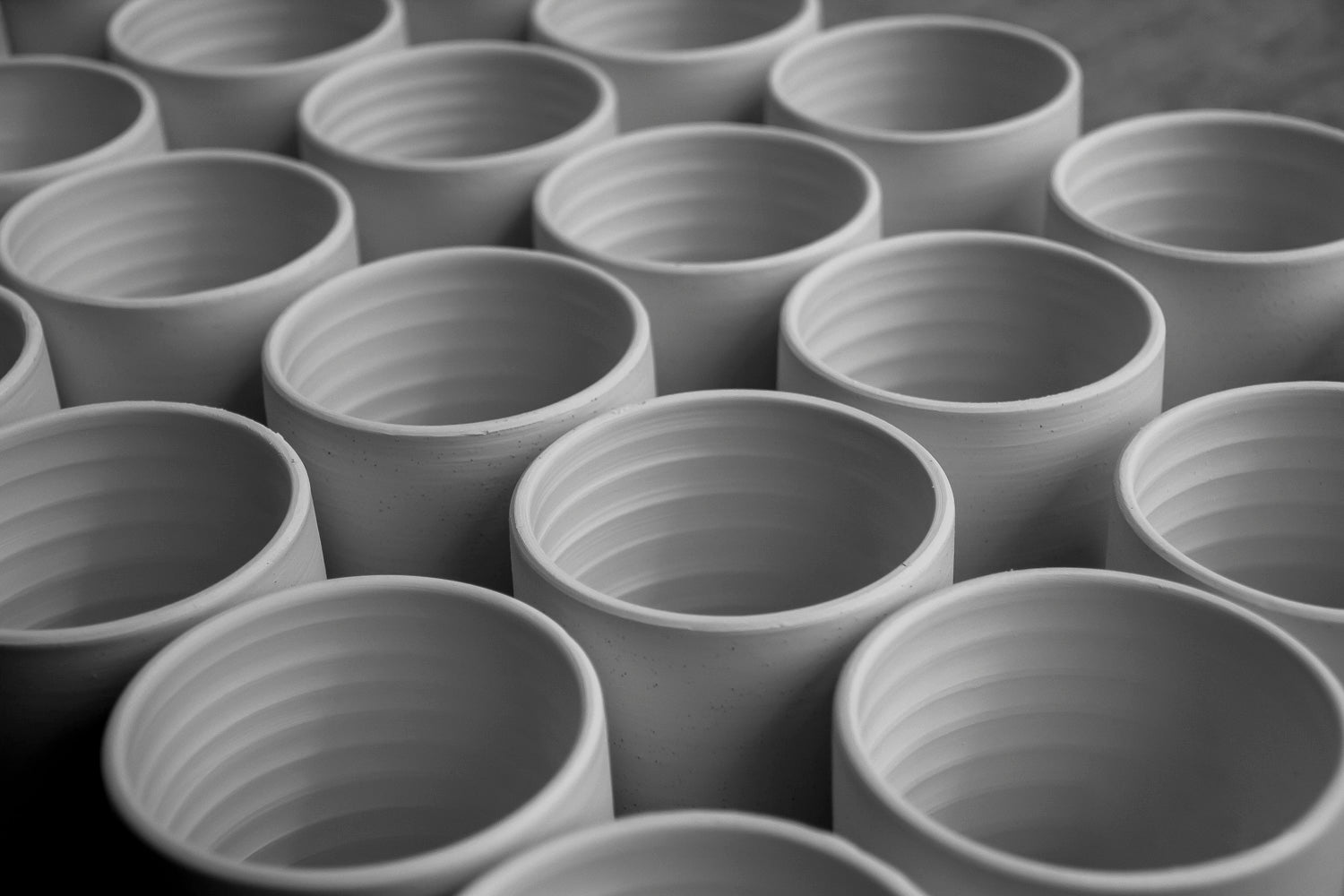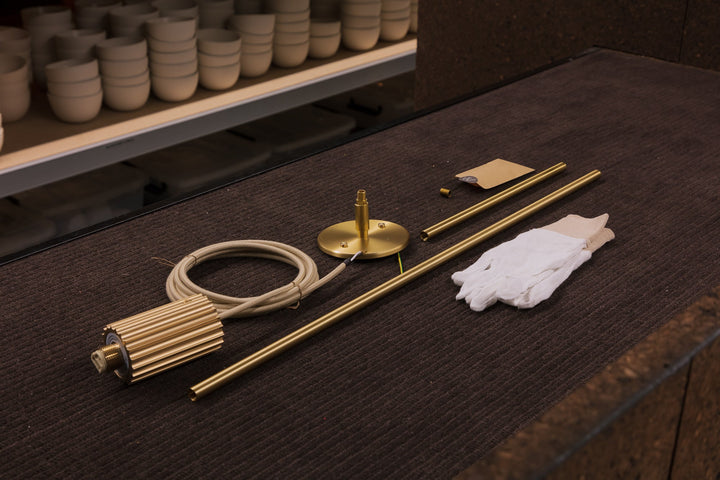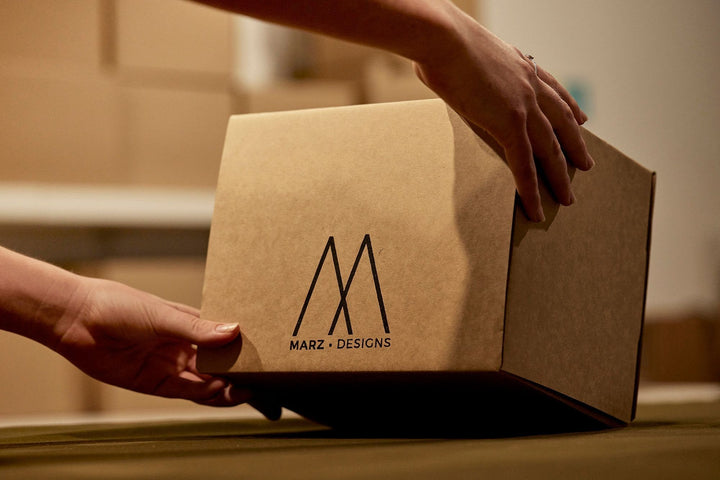At Marz Designs, our ceramic lighting products are made entirely by hand. In this feature, we demonstrate and explain the process of crafting handmade ceramic fixtures and what to expect in terms of variation in size, pigment and colour.
How Ceramics are Made
With love, by hand.
To create ceramics, the artisan combines natural raw ingredients like clay, any number of other minerals from the earth, and water, and then shapes them using techniques such as handbuilding, wheel-throwing, or slip casting. The final, shaped item is then placed in a kiln and heated to a high temperature during the ‘firing’ process.
While firing may require less creative energy than earlier stages of the ceramic-making process, it is still the most crucial step and demands a certain level of expertise that is gained through trial and error.
Every type of clay and glaze has been designed to mature at particular temperatures, and any deviation from those temperatures can result in unsatisfactory outcomes, such as weakened durability or altered colours. If the firing temperature is too high, the clay may become distorted or melt, while a temperature that is too low can result in dry, rough, and potentially unstable pieces.
However perfecting ceramics is subject to not only the initial sculpting of the object and the kiln temperature, but also the humidity and airflow, and the position of all parts within the kiln. Whether using a slip-cast or wheel-throwing technique, making ceramics is a fine art, one that we leave to our talented craftspeople, such as Gaya Ceramics and Erin Lightfoot Studio.



Our Methods of Production
The ceramic components in the Marz Designs Terra lighting collection use two different methods of production which inherently produce slightly varied results.
Slip-Cast
Slip-casting ceramics involves pouring a liquid mixture, called slip, into a plaster mould. The plaster absorbs the water from the slip, leaving behind a thin layer of clay that solidifies and forms the shape of the mould (or in our case, the shape of the light component). Once the clay has set, the mould is removed, and the piece is fired in a kiln to harden and strengthen it.

Marz Designs engages a number of Australian based slip castors, who use the slip-cast technique with a porcelain slip mixed with coloured pigment for our Terra components.
Learn more about slip-casting here.



Wheel-Thrown
Wheel-throwing is a pottery technique that involves using a spinning wheel to shape a lump of clay into a ceramic object. The potter centres the clay on the wheel and uses their hands and tools to shape it as the wheel turns. This technique allows for a range of shapes and sizes to be created, from bowls and plates to vases and jars. Once the piece is formed, it is left to dry and then fired in a kiln to harden and strengthen it.
Our Terra ceramic components produced by Gaya are all made using the wheel-thrown technique. For these, we use a white porcelain with a coloured engobe and glaze on the outside.
Learn more about wheel-throwing here.



What to Expect
Because these products are made entirely by hand, no matter the method (wheel-throwing or slip-casting), our ceramics are subject to slight variations in colour, pigment, and size. These differences should not be seen as defects but rather as unique and valuable characteristics that add to their aesthetic appeal. By understanding these variations, you can recognise that these pieces are not mass-produced, industrial products but rather handcrafted with care and skill.
Colour & Pigment
If the pieces are slip-cast, they are poured and mixed by hand and so some pieces will have veining or visible swirls in the pigment. These are considered natural characteristics and a hallmark of the handmade.
Due to the nature of clay and the manufacturing process, variations in shade and colour do occur, and therefore ceramic colours can vary between batches of up to 5%. For example, the Vanilla Bean glaze is mixed and applied by hand so the intensity of the speckle can vary between each fixture, allowing each piece to be one-of-a-kind.


Size
Due to the nature of clay, variations in size of up to 5% can occur and is a normal part of the manufacturing process. This is not considered a defect. Additionally, if the pieces are wheel thrown, the pieces are shaped by hand meaning they are shaped by hand and eye, without the use of a mould.
If you have ordered ceramic products from us previously please get in touch and send us a photo so we can colour-match and size-match as closely as possible.

The Terra Collection
Learn more about the Terra Collection and how the range utilises natural raw materials sourced from the Earth. Handmade clay ceramic shades and combinations of hand-turned timber elements are assembled to create a versatile selection of pendants, ceiling and wall fixtures.
Continue reading here.





